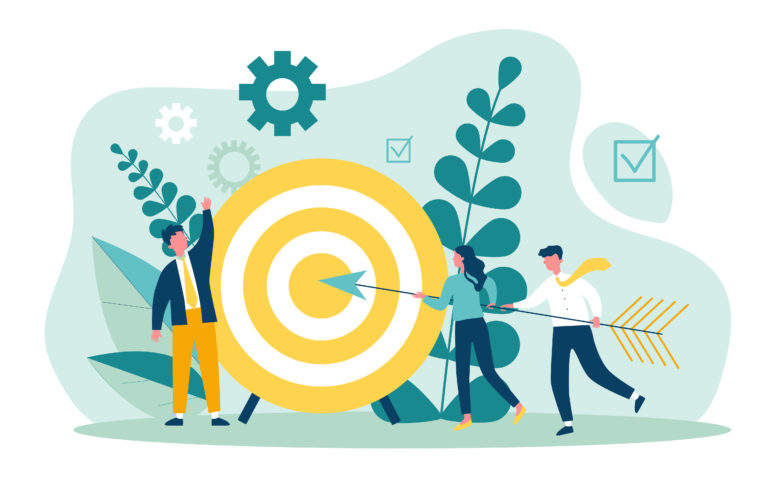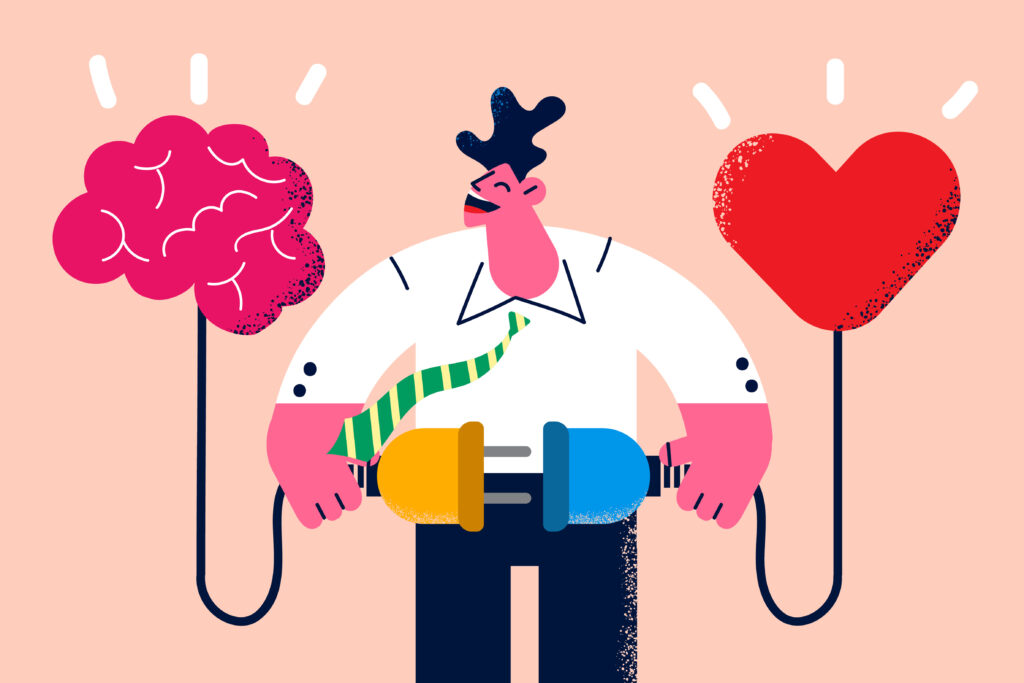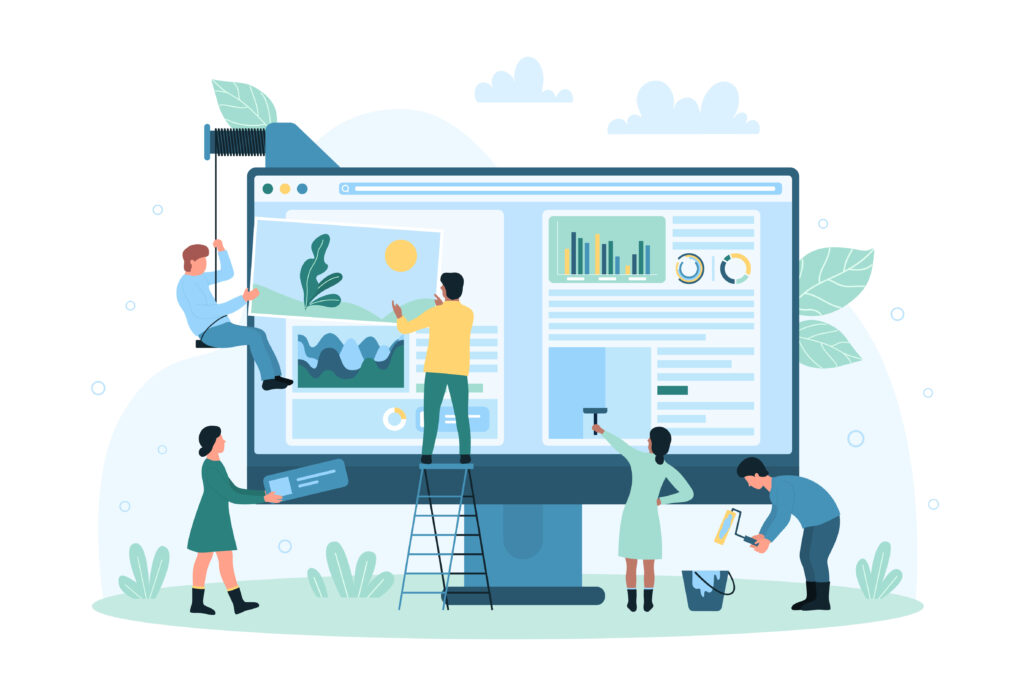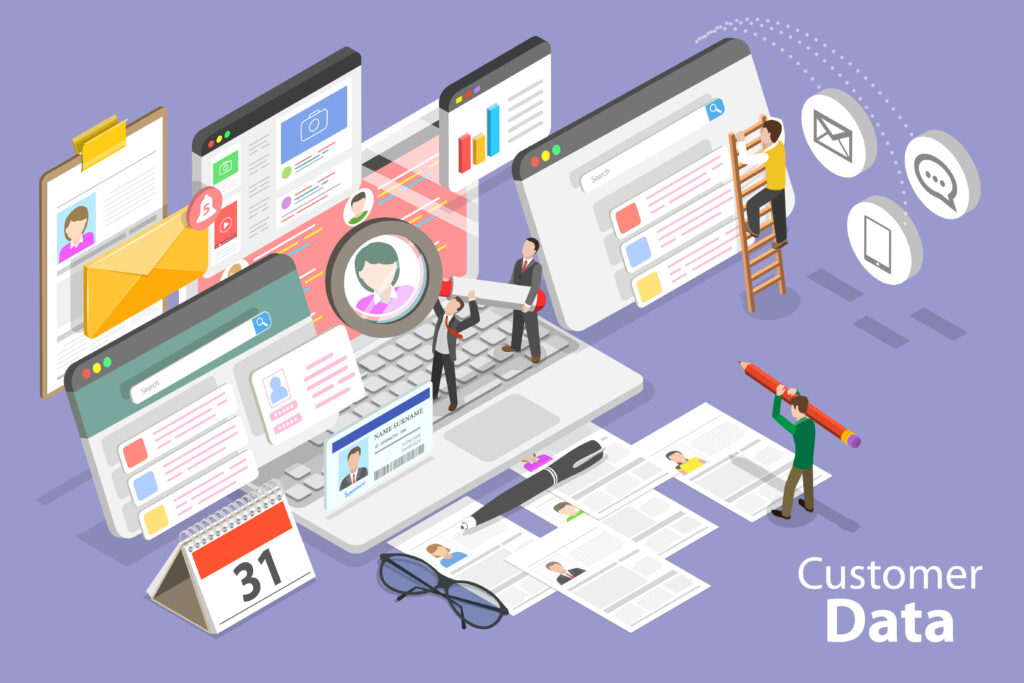How to Create a Customer Experience Strategy in 10 Simple, but Necessary Steps

In today’s competitive business landscape, creating an unforgettable customer experience isn’t just a luxury – it’s a necessity. With the rise of digital technologies and increased consumer expectations, companies must constantly evolve their strategies not just to attract, but also retain their customers. So, how can one create a standout customer experience?
This guide, titled “How to Create a Customer Experience Strategy in 10 Simple but Necessary Steps,” is here to answer that question. We’ll walk you through a detailed roadmap for understanding your customers, crafting customer personas, mapping out the customer journey, and much more. Each step is crucial in developing a comprehensive strategy that enhances customer satisfaction and drives brand loyalty and business growth.
Whether you’re a small business owner trying to make your mark or a seasoned professional looking to stay ahead of the curve, this guide will provide you with actionable insights to help you create an exceptional customer experience strategy. So, let’s dive in and start building a customer experience that meets and exceeds expectations.
Understanding your customers

Understanding your customers is the cornerstone of any successful customer experience strategy. It involves gaining a deep knowledge of who your customers are, what they need, and how they behave.
Start by gathering demographic data about your customers, such as their age, gender, location, and income. This data provides a general picture of your customer base and can help guide your marketing efforts.
Next, delve deeper to understand their behaviors and preferences. What are their buying habits? When and how do they prefer to shop? For instance, if you’re a retailer, you might find that a significant portion of your customers enjoy shopping online in the evening. This insight could guide you to improve your website’s performance during these peak hours.
Also, consider their needs and pain points. What problems are they trying to solve with your product or service? For example, if you run a meal delivery service, your customers might be busy individuals looking for convenient, healthy meal options. In this case, you’d want to ensure your service is as hassle-free as possible and the meals are nutritionally balanced.
Feedback is another crucial element. Conduct surveys or interviews, or simply monitor social media and review sites to understand what your customers say about your business. If a customer praises your quick delivery times, that’s a positive aspect to maintain. If another complaints about your product’s packaging, that’s an area for improvement.
This deep understanding of your customers allows you to provide a tailored experience that meets their specific needs, ultimately boosting satisfaction and loyalty. Remember, this isn’t a one-time process; customer behaviors and preferences can change over time, so continuous research and feedback are key to staying up-to-date.
NOTE:
-
27% of Americans report bad service as their number one customer service frustration. (Statista)
-
12% of Americans rate “lack of speed” as their number one customer service failure (Statista)
-
72% of customers find poor customer service having to explain the exact problem multiple times (Dimensional Research)
Create Customer Personas
Creating customer personas is a powerful way to visualize and understand the various types of customers interacting with your business. These personas are fictional, generalized representations of your ideal customers, designed based on your gathered data and insights.
For instance, let’s imagine you run a fitness equipment store. One of your personas could be “Gym Enthusiast Emily.” Emily is in her early 30s, works full-time, and enjoys hitting the gym after work. She values high-quality, durable equipment and isn’t afraid to spend a bit more for it.
Another persona might be “Home Workout Harry.” Harry is a middle-aged man who prefers working out at home. He’s seeking affordable, space-saving equipment to help him maintain a healthy lifestyle.
When creating these personas, consider factors like age, occupation, income, lifestyle, and buying habits. Also, delve into their motivations, frustrations, and goals. Why would Emily choose your store over another? What might deter Harry from buying your product?
These personas can guide everything from product development to marketing strategies. For example, you might focus on advertising your premium range of products for Emily, while for Harry, you could highlight your compact and cost-effective solutions.
Remember, while these personas are based on research, they are still generalized. Not every customer will fit neatly into a single persona, but they give you a good starting point for understanding and catering to your diverse customer base. Keep them updated with fresh data and insights to ensure they accurately reflect your customers.
Customer Journey Mapping

Customer Journey Mapping is a process where you illustrate the steps your customers go through when interacting with your company, both online and offline. This visual representation helps you understand their needs, expectations, and possible pain points at each stage of their journey.
Imagine you run an online bookstore. The customer journey might start with the ‘Awareness’ stage, where a potential customer hears about your store through social media, an online ad, or word of mouth.
Next is the ‘Consideration’ stage, where the customer visits your website, browses through your selection, reads reviews, and compares your offerings to other online bookstores.
The ‘Purchase’ stage is when the customer decides to buy a book from your store. They add the book to their cart, go through the checkout process, and make a payment.
After that comes the ‘Delivery’ stage, where the customer awaits the book’s arrival and eventually receives it.
Finally, there’s the ‘Post-Purchase’ stage, where the customer might leave a review, request a return or exchange, or make another purchase.
At each stage, identify the customer’s touchpoints (points of interaction with your brand), their needs, and potential frustrations. For instance, during the ‘Consideration’ stage, frustration could be a complicated search function making it hard to find a specific book.
Once you’ve mapped this out, you can work on improving the customer experience at each stage. Using the above example, you could enhance the search function on your website to make it more user-friendly.
Customer Journey Mapping is essential for empathizing with your customers and shaping their experience to be as smooth and positive as possible. It should be updated regularly as your business grows and evolves.
NOTE:
-
33% of customers get frustrated with long periods of holds or waiting times (HubSpot Research)
-
70% of unhappy customers are willing to give another opportunity after their problem is resolved (Glance)
-
Nearly 70% of customers are irritated when their call is transferred from one department to another. (Zendesk)
Customer Experience Vision
Defining your customer experience vision is about setting a clear and inspiring direction for how you want customers to feel when interacting with your business. This vision serves as a guiding star for all customer-related decisions and actions within your organization.
For instance, if you run a local coffee shop, your vision could be: “We strive to make every customer feel like a cherished part of our coffee-loving family. From the moment they step into our shop until they take their last sip of coffee, we want them to enjoy a warm, welcoming atmosphere, friendly service, and high-quality drinks tailored to their preferences.”
This vision statement embodies your overall ambition. It highlights key emotional touchpoints – feeling cherished, welcomed, and satisfied with a tailored experience.
Ensuring your vision aligns with your broader brand values and mission is important. For example, if your brand values include sustainability and community connection, your customer experience should reflect these.
Also, your vision should be communicated and understood across your entire organization. Every team member, from the baristas to the managers, should understand and strive to deliver on this vision. This way, regardless of whom your customer interacts with, they consistently receive the experience you’ve envisioned.
Remember, your customer experience vision will be unique to your brand and should be distinctive enough to set you apart from the competition. You might need to refine this vision as you grow and evolve, but it should always stay true to your core brand values and customer promise.
Establish Emotional Connections

Establishing emotional connections is all about creating experiences that resonate with your customers on a personal level. This strategy can often lead to stronger customer loyalty and positive word of mouth, as customers feel seen, understood, and valued.
Take a clothing store, for instance. Here, an emotional connection might be established through personalized recommendations. If a customer often buys sportswear, a personalized email showcasing your new sportswear collection shows you understand their preferences, making them feel valued.
Another way to build an emotional connection is through empathy and support. If a customer is having issues with a product, how you respond can greatly impact their feelings towards your business. Being quick to respond, understanding their frustration, and offering a satisfactory solution shows you care about their experience, fostering trust and loyalty.
Storytelling is another powerful tool for establishing emotional connections. Sharing the story behind your brand or products can connect customers to your journey. For instance, if your clothing store sources fabrics sustainably, sharing the story of how you ensure this could appeal to environmentally-conscious customers.
Celebrating customer milestones can also strengthen emotional connections. If a customer has been with you for a year, sending them a thank you message or a special discount could make them feel appreciated and deepen their emotional tie to your brand.
Remember, emotional connections aren’t built overnight. They require consistent, genuine effort and a deep understanding of your customers. But when done right, they can greatly enhance your customer experience and set you apart from competitors.
NOTE:
-
84% of customers report that their expectations were not exceeded during their last interaction with customer service. (Harvard Business Review)
-
78% of customers have given up on a transaction because of a negative customer experience. (American Express)
-
67% of customers end a call in frustration when they cannot reach a customer service representative. (Glance)
Define Your Capture Customer Feedback in Real Time
Capturing customer feedback in real-time is about gathering and analyzing customer opinions and comments as they interact with your business. This strategy gives instant insights into customer satisfaction, allowing you to promptly and effectively address any issues.
Consider a restaurant business as an example. You could use a digital ordering system where customers rate their experience immediately after dining. If a customer rates their meal or service poorly, you can address their concerns immediately by speaking with them directly or offering a discount or free item to apologize for their experience.
Online surveys sent via email or offered on your website are another effective tool for real-time feedback. They can cover various aspects of your business, from product quality to delivery speed and customer service.
Social media monitoring is another valuable strategy. Customers often voice their opinions on platforms like Facebook, Twitter, or Instagram. Setting up alerts for mentions of your brand or regularly checking your notifications can help you respond to feedback promptly.
You might also consider using a live chat feature on your website. This allows customers to share their thoughts and get immediate responses to their queries or concerns.
Real-time feedback helps you address issues as they arise and shows your customers that you value their opinions and are committed to improving their experience. This proactive approach can boost customer satisfaction and loyalty over time.
Remember, it’s essential to have a system in place to analyze this feedback and implement changes based on it. This ensures that you continually enhance your customer experience based on what your customers truly want and need.
Use a Quality Framework for Development of the Experience

Using a quality framework to develop the customer experience involves adopting a structured approach to measure and improve customer interactions with your business. Several recognized frameworks can guide your efforts, including Net Promoter Score (NPS), Customer Satisfaction (CSAT), and Customer Effort Score (CES).
NPS measures customer loyalty by asking, “On a scale of 0-10, how likely are you to recommend our business to a friend or colleague?” Customers are categorized as promoters (9-10), passives (7-8), or detractors (0-6). Your NPS is the percentage of promoters minus the percentage of detractors.
CSAT, on the other hand, measures customer satisfaction with a specific interaction or overall experience. You could ask, “How satisfied were you with your recent purchase?” on a scale from “Very Unsatisfied” to “Very Satisfied”.
CES assesses the ease of interaction with your company. You might ask, “How easy was it to get the help you needed?” with options ranging from “Very Difficult” to “Very Easy”.
For instance, let’s say you run an online electronics store. You could use NPS to gauge overall brand loyalty, CSAT to measure satisfaction with individual purchases, and CES to assess the ease of use of your website or the purchase process.
These quality frameworks provide valuable metrics to track your customer experience strategy’s effectiveness. They highlight areas needing improvement, and successful aspects to continue or amplify. By aligning your efforts with these metrics, you can systematically enhance your customers’ experiences and build stronger relationships with them.
Employee Engagement
Employee engagement plays a vital role in creating an outstanding customer experience. Engaged employees are motivated, committed, and passionate about their work, which reflects in their interactions with customers.
Regular training and development programs are one effective way to boost employee engagement. For instance, a customer service representative at a phone company would be better able to help customers if they are trained in troubleshooting common issues and are kept updated on new product features or policies.
Recognizing and rewarding employees for their efforts can also increase engagement. This could be as simple as a shout-out in a team meeting for a staff member who went above and beyond to assist a customer or a more formal employee of the month program.
Creating a positive work environment is another key element. When employees feel valued, supported, and part of a team, they’re more likely to be engaged. This might involve regular team-building activities, open and supportive communication channels, or flexible work hours or locations.
Finally, ensuring employees understand the company’s mission and values can make them feel part of something bigger. If they understand how their role contributes to the company’s goals and the importance of providing excellent customer experience, they’re more likely to take pride in their work and strive to deliver on those expectations.
In essence, engaged employees are likely to provide better customer service, improving customer satisfaction and loyalty. They’re your front line in delivering the customer experience, so investing in their engagement is a win-win for everyone involved.
Measure the Customer Experience

Measuring the customer experience is crucial for understanding how well your business meets customer expectations and identifying areas for improvement. There are several ways to accomplish this.
Customer Satisfaction (CSAT) scores provide a quick snapshot of customers’ satisfaction with a specific interaction or overall experience. For example, after a customer support call, you could ask, “How satisfied were you with the service you received today?” on a 5-point scale from “Very Unsatisfied” to “Very Satisfied.”
Net Promoter Score (NPS) measures customer loyalty by asking how likely customers are to recommend your business to others. This can give you insight into overall customer sentiment towards your brand.
Customer Effort Score (CES) assesses how easy it is for customers to interact with your company. For example, you could ask, “How easy was it to place your order today?” after a customer makes an online purchase.
Churn rate, the rate at which customers stop doing business with you, can also provide insights. For example, a high churn rate could indicate issues with the customer experience.
Customer feedback, through surveys or reviews, can give more detailed insights. Reading through these can help identify common themes or issues.
Monitoring social media and online review sites can also help gauge customer sentiment.
For instance, if you run an e-commerce store, you could measure the CSAT score for different stages of the customer journey – website browsing, checkout, and post-purchase service.
By measuring the customer experience regularly, you can track your performance over time, identify trends, and make data-driven decisions to improve your customer experience strategy. Remember, the goal isn’t just to get high scores but to genuinely understand and enhance your customers’ experiences.
Regularly Update Your Strategy
Regularly updating your customer experience strategy is essential to stay relevant and meet evolving customer expectations. Markets, technologies, and customer preferences change over time, so your strategy should reflect these changes.
One way to keep your strategy fresh is by continuously collecting and analyzing customer feedback. For instance, if customers start asking for a chat feature on your website, it’s a sign you should consider incorporating this into your strategy.
Market research can also inform updates to your strategy. If a competitor starts offering a new service that’s popular with customers, it might be worth exploring similar options.
Technological advancements offer new opportunities for enhancing the customer experience. If a new tool or platform becomes available that could streamline the purchasing process or improve customer support, consider integrating it into your strategy.
For example, let’s say you run a bakery. When you first opened, your customer experience strategy might have focused on providing exceptional in-store service. However, due to the rise of online shopping, you decide to update your strategy to include an online ordering system and home delivery service.
As you update your strategy, communicate any changes to your team to ensure everyone is on the same page. It’s also important to monitor the effects of these changes to see if they’re improving the customer experience.
In essence, your customer experience strategy should be dynamic, not static. Regular updates ensure it stays aligned with your business goals, customer needs, and market conditions, leading to sustained customer satisfaction and business growth.
Conclusion
In conclusion, creating a customer experience strategy is not just an optional aspect of doing business; it’s a crucial determinant of your brand’s success. It involves understanding your customer deeply, mapping out their journey, creating personas, and defining your customer experience vision. Building emotional connections and capturing real-time feedback gives valuable insights that drive improvements in your offerings and interactions. Using a quality framework for the development of customer experience ensures your efforts are measurable and aligned with recognized standards.
Your employees play a significant role in delivering this experience, and thus, their engagement is vital. Constant measurement of the customer experience ensures you remain in tune with your customers’ needs and satisfaction levels. Lastly, regular updates to your strategy ensure you stay relevant and in step with evolving customer preferences, market trends, and technological advancements.
Remember, a robust customer experience strategy not only improves customer satisfaction and loyalty but also sets you apart from the competition. It’s an ongoing process, a journey of continuous learning and improvement. Embrace this journey, and you will create a customer experience that truly resonates with your audience and drives your business success.


